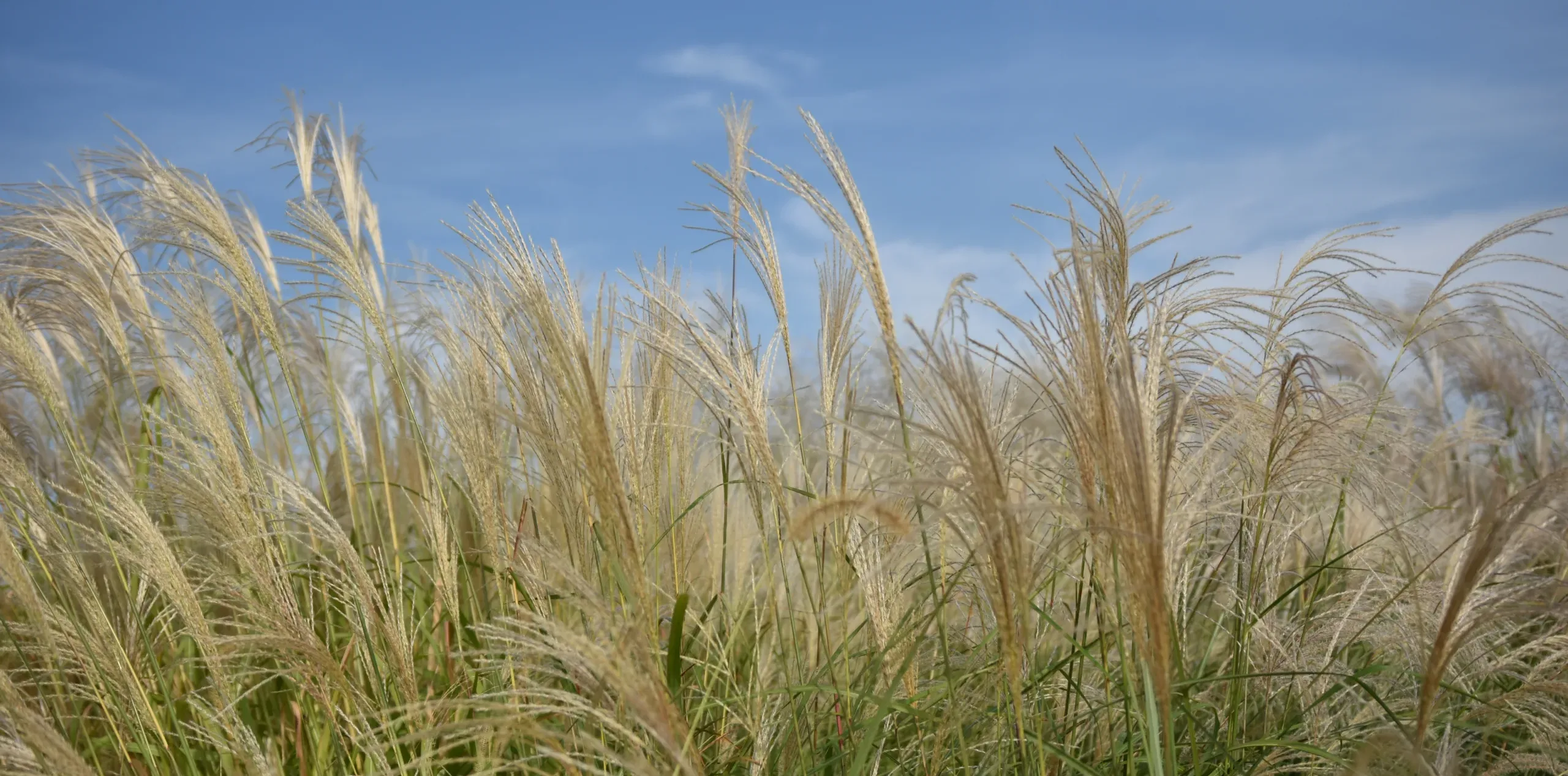Thanks to research breakthroughs by CABBI’s internationally known miscanthus experts and geneticists, this unique plant is poised to be a game-changer on the bioenergy front — and beyond.
By Julie Wurth, CABBI Communications Specialist
Giant, versatile, and genetically complex, miscanthus poses unique opportunities for the farm economy, domestic manufacturing, next-generation biofuels, and the environment.
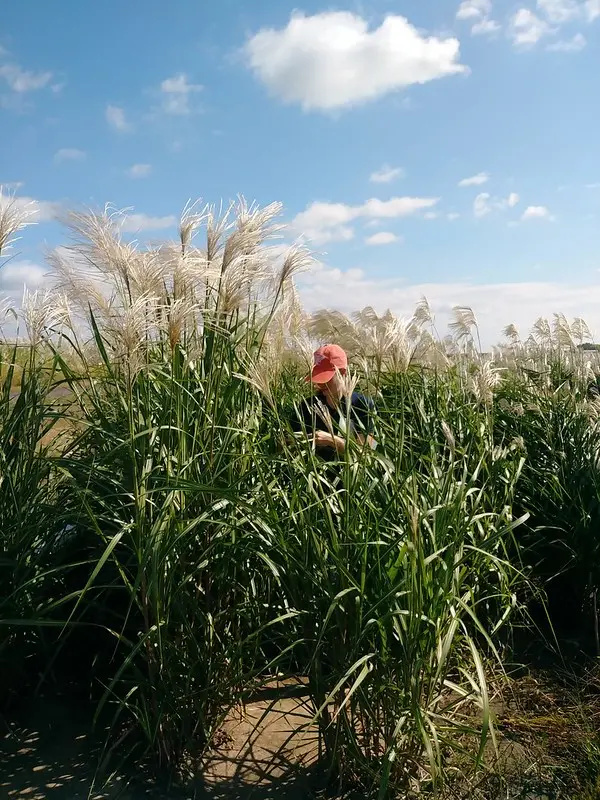
This ancient, highly productive, and resilient grass hails from Asia, where it thrives from the tropics of New Guinea to the cold, temperate lands of eastern Russia. Today, miscanthus is an emerging biomass crop grown on roughly 20,000 acres in the eastern half of the United States and used commercially for a multitude of high-value products: fuel for heat and electricity, compostable packaging, pet food fiber, livestock bedding, mulch, erosion control, molded fiber products, and more.
Miscanthus varieties were introduced in the U.S. by the famous Biltmore Estate Gardens, which sold ornamentals around the country. One particular variety, the sterile triploid Miscanthus x giganteus, has been studied in Illinois for the last 20 years after initial results demonstrated its unsurpassed productivity in the Midwestern environment. Now work around the country shows it is more resilient and profitable than most row crops on marginal lands because it needs little fertilization, tolerates both drought and cool temperatures, and can efficiently sequester carbon in its underground rhizome and deep roots. Plus, as a perennial, it only needs to be planted once and can be harvested annually for 20-plus years.
As a result, interest in miscanthus has skyrocketed. Given its potential as a source of biofuels and bioproducts, this versatile feedstock is targeted to be grown on 25 million acres by 2050 (Billion Ton Report).
But bringing all of its desirable traits together into a perennial that can grow in varied U.S. climates and produce oil for sustainable biofuels has been a breeding challenge. That’s been a focus of researchers at the Center for Advanced Bioenergy and Bioproducts Innovation (CABBI), a U.S. Department of Energy-funded Bioenergy Research Center that is developing ways to produce sustainable jet fuel, biodiesel, and high-value biochemicals from plant lipids and biomass in miscanthus and other bioenergy crops.
Thanks to research breakthroughs by CABBI’s internationally known miscanthus experts and geneticists, this unique plant is poised to be a game-changer on the bioenergy front — and beyond.
“It’s analogous to maize in the early 1900s,” said Erik Sacks, Professor of Crop Sciences at the University of Illinois Urbana-Champaign and one of the world’s foremost authorities on miscanthus breeding. Maize has been cultivated for thousands of years, but scientists at the turn of the 20th century put together genetic resources and practical knowledge of how to work with it to make it the valuable, high-yielding crop we know today. Similarly, he said, “We’re creating a foundation for miscanthus research and development.”
That foundation is built on a unique collection of miscanthus germplasm, gathered by Sacks and his colleagues around the globe, and several recent breakthroughs by CABBI researchers, including: a reference genome for miscanthus; advances in gene-editing tools; and machine-learning technology that can automatically predict crop traits from drone imagery to speed up phenotyping in CABBI’s miscanthus field trials. Combined, they have enabled new hybrids of the productive perennial Miscanthus × giganteus and new insights about the genetics of key traits, “all happening in parallel,” Sacks said.
“It’s a liftoff of this giant endeavor, involving people with a wide array of specialties collaborating. That’s what CABBI allows us to do: pull that all together. That’s the really critical piece,” Sacks said.
At the same time, the agricultural community is increasingly interested in developing miscanthus for different commercial uses.
“A lot of prior funding, through industry support and federal grants, has helped us build genetic and genomic resources for miscanthus,” said CABBI Co-PI Kankshita Swaminathan of the HudsonAlpha Institute for Biotechnology in Huntsville, Ala. “This has really set us up for a very exciting basic science-to-application phase. I am looking forward to the next 10 years of research and innovation, using miscanthus for bioenergy, bioproducts, and biomaterial.”
Sacks and Swaminathan are Deputy Theme Leaders for CABBI’s Feedstock Production research, which is led by Emily Heaton, Professor of Crop Sciences at Illinois and a pioneering miscanthus grower.

Swaminathan is also part of a team of CABBI scientists who have made huge strides in deciphering the genetics of this perennial plant, including Daniel Rokhsar, Professor of Genetics, Genomics and Development at the University of California Berkeley and the Joint Genome Institute (JGI); and Stephen Moose, Professor of Crop Sciences at Illinois. In 2020, an international team led by these CABBI scientists sequenced the full genome of an ornamental variety of miscanthus, providing a road map for researchers exploring new ways to maximize the plant’s productivity and discover the genetic basis for its beneficial traits.
Two years later, Swaminathan and former CABBI Co-PI Nancy Reichert at Mississippi State University took it a step further, successfully demonstrating precision gene editing in miscanthus for the first time. Using CRISPR/Cas9, they developed tools that allow researchers to selectively target existing genes within miscanthus plants to knock out or modify their function and introduce new genes into precise locations.
That genetic work has set the stage for plant transformation — inserting helpful DNA from other plants, such as sorghum, into the miscanthus genome to improve specific traits. With those tools, researchers can breed a new perennial that produces abundant biomass, is cold-tolerant, and can grow in a wide range of climates — and begin probing the plant’s oil production capabilities.
“Does it accumulate fatty acids? Where does it accumulate fatty acids? How much is it accumulating? We can start to ask all these questions,” Swaminathan said. “And we can also develop different kinds of plants with traits that farmers and others are looking for.”
Miscanthus Transformation
Miscanthus × giganteus, the type favored by growers, is sterile and doesn’t produce viable pollen or seeds. Instead, it reproduces from rhizomes, underground stems that send up shoots and allow clonal propagation. Researchers need viable seeds to breed improved varieties with desired traits, but they also want any commercial crop to be sterile so it’s not invasive. As a triploid plant, M. × giganteus has three sets of chromosomes that can’t pair evenly during reproduction and rarely produce fertile eggs. That’s good for non-invasiveness, but bad for breeding, Sacks said.
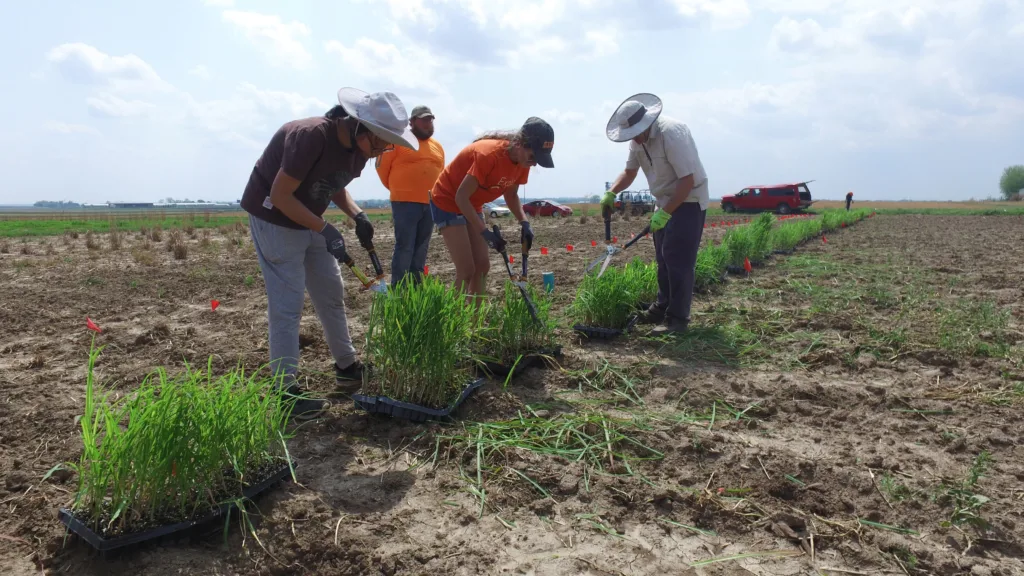
For now, researchers are focusing on sterile triploids, but gene editing holds the promise of developing miscanthus varieties that could produce seed without being invasive, similar to other domesticated crops, Sacks said. The key will be developing a “non-shattering” plant, where the seed remains fixed to the plant rather than blowing off into nearby fields.
Once planted, miscanthus can take two to three years to reach full maturity in the Midwest. However, field trials by Sacks and his CABBI partners at Alabama A&M University and Mississippi State University showed new varieties could produce a harvestable yield after the first season in southern zones, and after the second season in the Midwest — which could mean quicker profits for growers.
Aiding these efforts is the vast collection of miscanthus germplasm, or genetic plant material, compiled during the last decade-plus by Sacks and international collaborators in China, Japan, Korea, and eastern Russia, with support from the U.S. Department of Energy and the U.S. Department of Agriculture. The collection includes 600 accessions — groups of related plant material collected from a specific location — from each of two major species, Miscanthus sacchariflorus and Miscanthus sinensis, the parental species of M. × giganteus. Sacks brought in a representative set of each one of those genetic groups to maximize genetic diversity in CABBI’s crop research. In collaboration with HudsonAlpha and JGI, the genome of at least one plant from each group is being de novo sequenced from the ground up.
“So now we have this genetic resource — we know where it’s from, what its environment is like, and now we will have its complete sequence as part of this larger collaboration,” Sacks said. “You can imagine that will be very powerful for gene discovery, allele mining, and faster development of new cultivars.”
In the quest to design ideal miscanthus crops for different regions, Sacks frequently uses a “mini-core” collection of accessions — a smaller representation of each of those genetic groups within each species — and evaluates them for the diversity of a particular trait. For example, he and his team are testing freeze tolerance in dormant plants. They place dormant plants from a small but representative mini-core inside chest freezers to simulate cold northern winters and test different individuals from the same genotype at different temperatures. Using a mini-core collection allows researchers to quickly and efficiently gain insights about the range of diversity for a trait of interest within a species without the cost and effort of screening a much larger collection, Sacks said.
In a recently published study, Sacks and former graduate student Hongxu Dong examined the effect of day length on flowering and growth in a mini-core of M. sinensis from a range of latitudes and environments around the world. They used growth chambers to manipulate light exposure for the plants. All tended to flower earlier with shorter days, but the plant’s sense of a “short day” varied based on where it originated. For those from northern regions with summer days as long as 16 hours, even a 14- or 15-hour day would cause the plant to flower quickly; for those from the subtropics, it took a much shorter day to prompt flowering. A current study of M. sacchariflorus is showing the same trends, Sacks said. Day length also affected the size of the plant; short days are a cue for the plant to go dormant.
All of this work is geared toward helping researchers improve the plant’s growing range and resilience to environmental factors, such as tolerance to cold or drought, Heaton said.
Miscanthus has been shown to grow well in “prairie potholes” — saturated areas of farm fields where corn and soybeans don’t survive. The M. × giganteus Illinois clone is known to be flood-tolerant. Armed with new genetic information Sacks is hoping to improve on that by experimenting with other offspring of M. sacchariflorus, a riparian plant that likes to be near water, and M. sinensis, a hill plant that doesn’t usually grow in standing water.
The work is practical from an economic standpoint, Sacks said. “We don’t want to displace corn where it does really well. But you can look at almost any farm field around here where it’s very profitable to grow corn, and there are certain parts of that farm that are not profitable at all because they flood all the time. So you can plant that unprofitable piece of a very profitable farm with a new crop that is profitable because it is adapted to that piece of land. And it’s a win-win.”
High-tech Advances
Technology is accelerating these breeding efforts — a crucial step if miscanthus is to reach its potential for sustainable and resilient biomass production.

One key bottleneck has been the ability to measure the growth of thousands of varieties of the crop in the field and select the small number that perform best. In a 2022 study led by CABBI Director Andrew Leakey and Postdoc Sebastian Varela, researchers demonstrated how unmanned aerial vehicles (UAVs, or drones) combined with cutting-edge machine learning methods can help select the best candidate genotypes in miscanthus breeding programs.
The team used 3-D neural nets — computer systems modeled on the human brain and nervous system — to analyze very high-resolution aerial images of miscanthus plants and identify key traits such as flowering time or height during the crop’s growing season.
The traditional method — going into the field and measuring plant height or stem diameter by hand — “takes a long time and a lot of people power,” Sacks said. “And it’s costly.” Automating that process requires fewer hands and allows researchers to economically grow and evaluate larger populations so they can select better breeding lines and cultivars more quickly. It makes larger field trials more economical, allowing breeders to find the outliers with desired traits that wouldn’t necessarily show up in a smaller population.
The new technology can also help predict which plants will be higher-yielding earlier in the season, before they flower, which “could potentially save us a whole year in a breeding program,” Sacks said.“That would be a big deal.”
Leakey is partnering with CABBI Co-PIs Ernst Cebert and Justin Kuang at Alabama A&M University to apply the technology to miscanthus there. Both have worked closely with Sacks and Swaminathan on miscanthus field trials in Alabama, testing how winter varieties from Illinois react to warmer temperatures and identifying which plants are better adapted to the southern United States. They are also studying the impact of recurring drought on miscanthus populations. Researchers will use both manual and drone-assisted phenotyping and correlate that information with genomic data developed by Sacks and Swaminathan to identify markers and candidate genes responsible for drought tolerance.
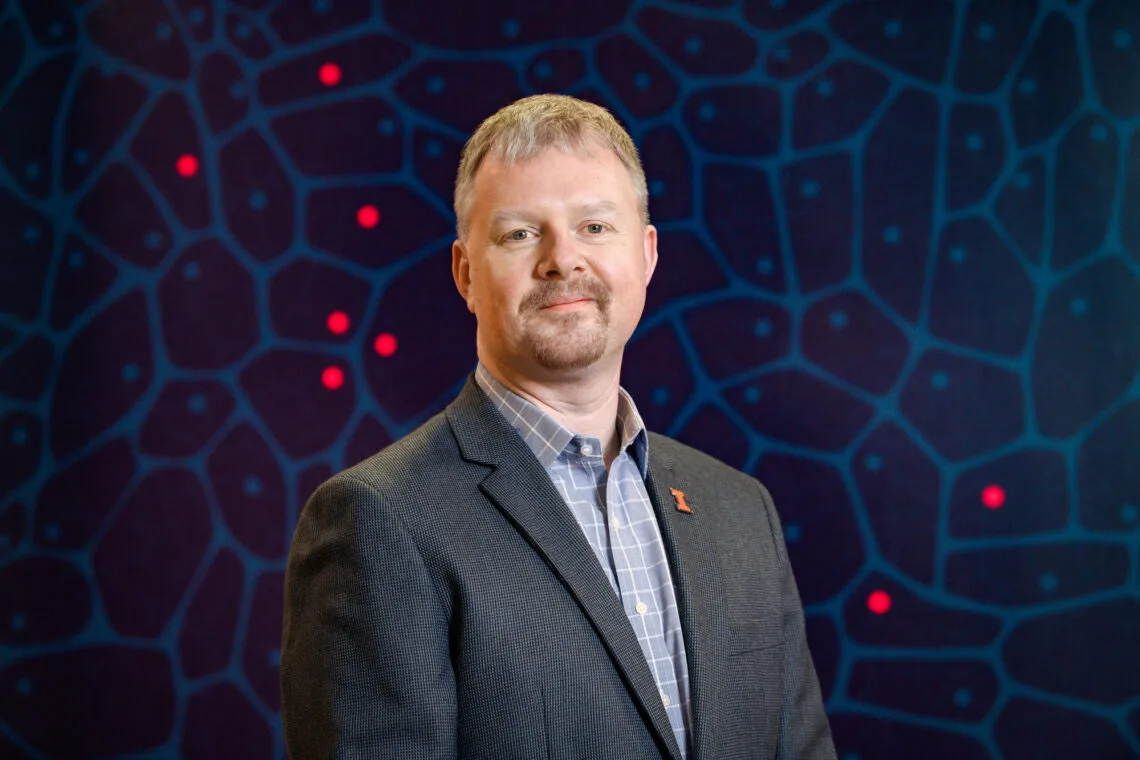
Similarly, Sacks is working with CABBI Co-PI Diego Jarquin, a statistician at the University of Florida, to use remote sensing data in genomic selection models designed to identify miscanthus plants with phenotypes, or characteristics, that are best suited to specific regions or locations.
Researchers are also learning more about other attributes of the plant that contribute to its value. Like other perennials, miscanthus is better at building soil organic matter than annuals that are dug up and replanted each year. The underground rhizome stores carbon while the plant is dormant in winter.
Other CABBI studies have calculated how planting miscanthus and other bioenergy grasses in corn-soybean fields could reduce nitrogen leaching into waterways (Sacks and Sustainability Co-PI Andy VanLoocke); found that planting miscanthus instead of row crops can increase the productivity of farmed potholes (Heaton and VanLoocke); and shed light on the role of the soil microbiome in providing nitrogen to miscanthus and other bioenergy grasses, which typically don’t require much nitrogen fertilizer (Heaton and Sustainability Co-PI Adina Howe).
The Miscanthus Market
Recent scientific advances coincide with a growing commercial market for miscanthus as a source of bioproducts. Leading the way are two companies directed by members of CABBI’s advisory board: Travis Hedrick from AGgrow Tech, the largest producer of miscanthus grass in the United States; and Kelly Tiller of Genera Inc., which manufactures compostable paper plates and other food service products from miscanthus and switchgrass — and recently announced an expansion.
“As more industries get on board, and as we find more uses, it will help build that ecosystem out a little bit more,” Swaminathan said.

How long will it be before miscanthus is a major biomass crop? That depends on how quickly markets expand, Heaton said.
“We usually see farmers adopt miscanthus within 1-2 years of a market developing in a region. The market development and widespread production are inextricably tied together,” Heaton said.
Heaton and Hedrick predict sustained demand for bioenergy and bioproducts could dramatically expand the market for miscanthus in the next 10 years.
“Miscanthus is a leading supply-side solution that also cleans water, protects soil, and diversifies farmer income,” Heaton said.
Miscanthus biomass is already a source of heat and electricity at the University of Iowa, which has pledged to stop using coal by 2025. The University of Iowa hired AGgrow Tech to rent local farmland, then grow and produce miscanthus for fuel to burn at its power plant. Iowa State University also hired AGgrow Tech to plant miscanthus on university-owned land, where Heaton, VanLoocke, and CABBI Co-PI Marshall McDaniel conduct their research. The universities and industry partners work closely together, co-developing knowledge to enable science and practice.
AGgrow Tech started in 2010 to commercialize purpose-grown energy grasses, Hedrick said. Incentives in the Renewable Fuels Standard piqued the company’s interest in miscanthus. After growing the perennial grass for a few ethanol startups that didn’t pan out, AGgrow Tech switched its focus to other miscanthus-based products — primarily bedding for livestock and poultry.
Hedrick calls it a “starter market” to build interest in miscanthus production with farmers raising livestock across the country. Once technology advances and new, higher-value markets emerge, AGgrow Tech and its grower network will have the capabilities to meet that demand.
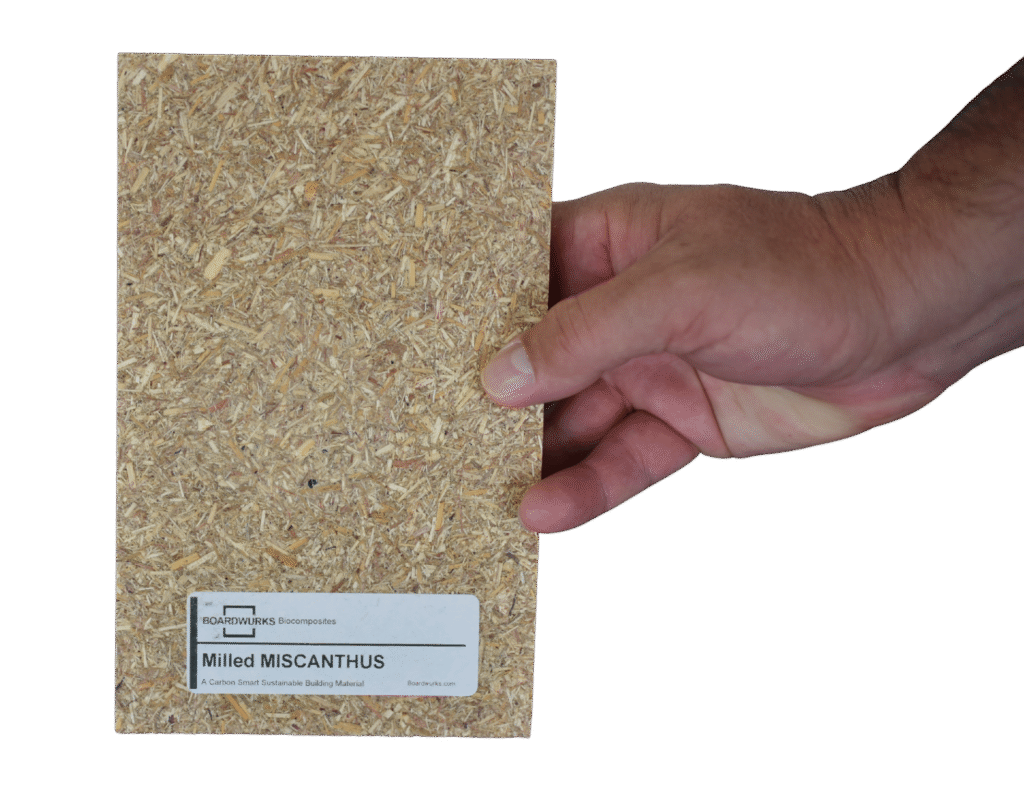
AGgrow Tech currently grows more than 11,000 acres of miscanthus in 16 states and continues to expand by 2,000 to 4,000 acres a year. The company supplies poultry companies like Mountaire Farms, Tyson Foods, Perdue Farms and Farmers Focus with high-quality bedding that improves animal health and welfare. It also sells miscanthus to industrial users like Genera (for its compostable packaging) and Balchem (as an ingredient for animal and human health products), among others.
The market is diverse. One AGgrow Tech customer is evaluating miscanthus as a binder for deck boarding made from bioplastic. Hedrick is working with a North Carolina company called Plant Switch that is testing miscanthus for manufacturing plant-based forks and spoons. Cellulose and lignin are two of most-used polymers in products around the world, and miscanthus is an ideal source, he said.
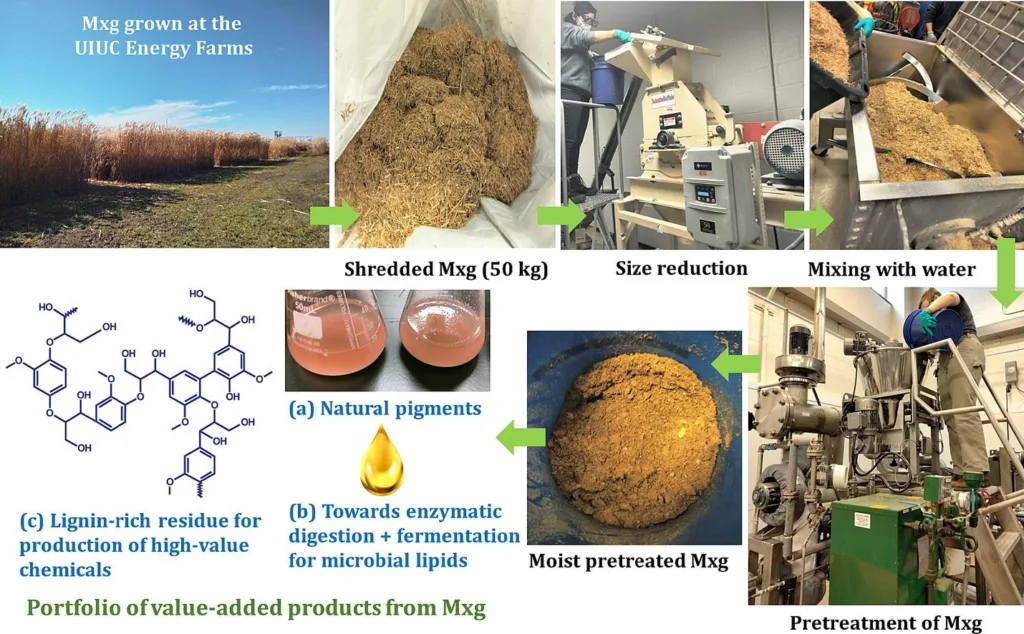
CABBI Study Finds New
Use for Miscanthus:
Natural Pigments
CABBI Conversion researchers at the University of Illinois Urbana-Champaign developed a zero-waste, chemical-free pretreatment process for recovering these pigments and, in an important step toward commercialization, successfully scaled up that work at the Integrated Bioprocessing Research Lab (IBRL).
They recovered industrially relevant quantities of high-value pigments, microbial liquids, and lignin-based chemicals from Miscanthus x giganteus (Mxg). The results were reported recently in the Chemical Engineering Journal by a team led by Vijay Singh, IBRL Director and Professor of Agricultural and Bioengineering at Illinois, and Bruce Dien of the USDA Agricultural Research Service.
Lignin-rich residue is important to the production of sustainable aviation fuel precursors and other high-value lignin-based chemicals, the researchers wrote. “Hence the proposed biorefinery based on Mxg creates an opportunity for generating revenue from multiple high-value products. As the demand for biofuels and biobased products is rising, the biorefinery products from Mxg would create a niche in the industrial sector.”
Hedrick sees more market growth ahead, especially by those trying to strengthen U.S. energy independence, support domestic agriculture, and promote efficient, market-driven solutions in consumer product systems.
“What makes this crop good is that it’s good for the environment,” he said. “One of the advantages of miscanthus is that it accumulates organic matter in the soil. You don’t have to replant it, don’t have to use a lot of fertilizers to maintain it. That has positive implications for soil and water quality. I think it’s a very undervalued aspect of business.
“Miscanthus is not really a high-value crop yet because it’s not being converted into biofuels, but folks are paying for other elements of the value proposition,” Hedrick added. “For example, there are payments associated with preventing nutrient loss from fields. That’s a market in itself.”
This creates an economic growth opportunity where domestic farm-based source of biomass can be used to build products that previously required imported raw materials, Leakey said.
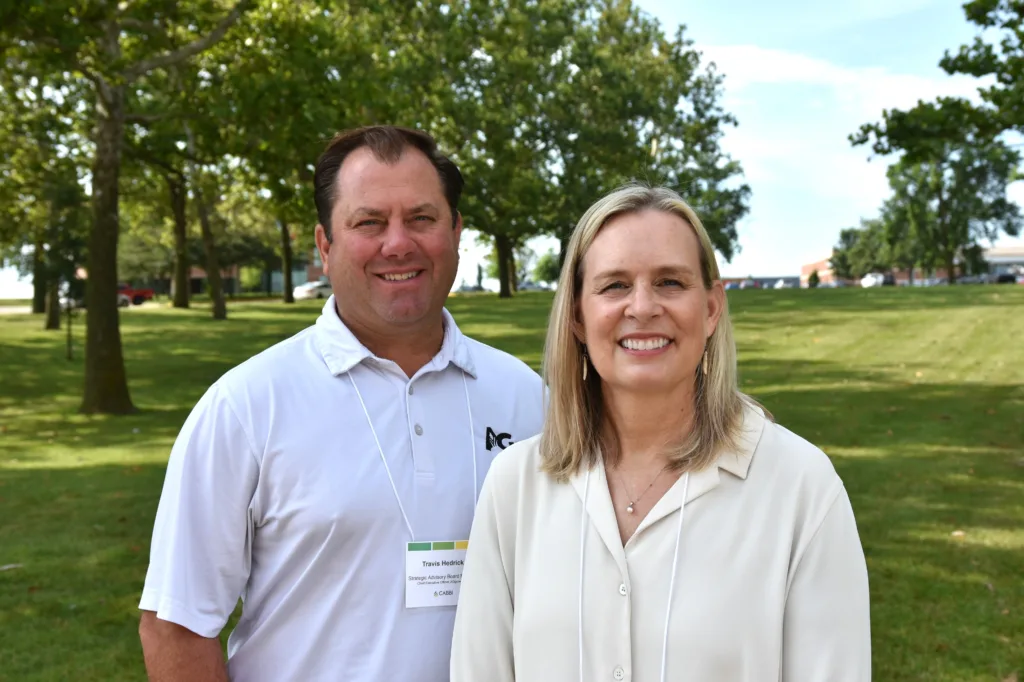
“Miscanthus also allows farmers to improve soil health and water quality by accumulating organic matter, thereby improving productivity of their fields,” he said.
Heaton and Hedrick believe miscanthus will follow the path of soybeans, which populated only about 30,000 acres in the U.S. less than 100 years ago. Now they cover millions of acres in the U.S. alone.
No matter its scale of use, miscanthus will be one of a suite of crops used for fuels and products. Lipid-producing types of sorghum and energycane are also moving forward, with promising results in early field trials, Heaton said.
“But we’re not likely to grow cane in the Midwest. There is a need for multiple types of crops with different adaptations and traits,” she said. “CABBI is at the point where we can leverage our basic science knowledge into new work that helps communities and industry evolve.”
Hedrick concurred: “Technologies will advance. Domestic biofuels and bioproducts will get there. We’re just on the cusp of what these markets may look like.”
